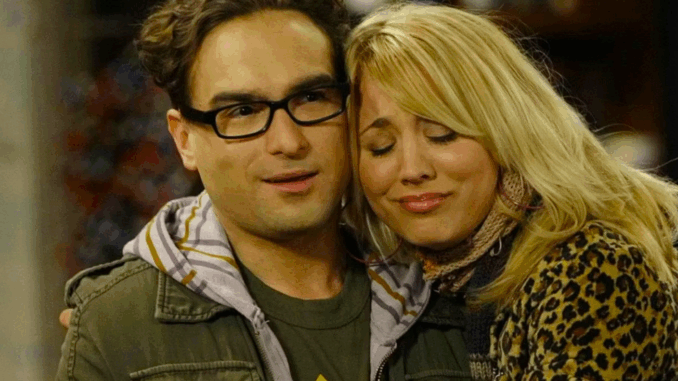
At first glance, The Big Bang Theory looks like a lighthearted sitcom built on geeky humor and romantic mishaps. But beneath its punchlines and pop culture references lies something deeper: a subtle yet consistent dismantling of social stereotypes. Over its 12-season run, the show redefined how TV portrays scientists, women in STEM, introverts, and the socially awkward — often without audiences even realizing it.
Making the Nerd the Hero
Before The Big Bang Theory, scientists on television were usually relegated to the sidelines — eccentric, emotionless, and usually devoid of social relevance. But this show flipped the script. For once, the “nerds” weren’t the joke — they were the protagonists.
Sheldon, Leonard, Raj, and Howard weren’t just intelligent; they were layered, emotional, ambitious, and, yes, romantic. Viewers didn’t laugh at them — they laughed with them. The show normalized the idea that people who love quantum mechanics, comic books, or Dungeons & Dragons could lead full, interesting, and emotionally complex lives.
In doing so, The Big Bang Theory helped chip away at the tired trope of the one-dimensional “genius.”
Women in STEM Take the Spotlight
The arrival of Amy Farrah Fowler and Bernadette Rostenkowski marked a turning point. Not only did the show add two female leads, but it introduced them as scientists who were unapologetically intelligent and successful.
Amy, a neurobiologist, and Bernadette, a microbiologist with a PhD, became vital members of the main cast. They didn’t exist to be love interests — though they were — but also to challenge the men, drive plots, and create new dimensions in the group dynamic.
Even more importantly, their intelligence was never downplayed. The show resisted the temptation to make them “sexy nerds” or to strip away their complexity. Instead, they showed that women in STEM could be funny, flawed, romantic, powerful, and—most of all—human.
Penny: The ‘Ordinary’ Who Was Anything But
Penny, played by Kaley Cuoco, might not have had a PhD, but her emotional intelligence, street smarts, and people skills made her the group’s anchor. Her character offered balance to the academic world of the guys and highlighted a different kind of intelligence.
Though early seasons sometimes leaned into the “dumb blonde” stereotype, Penny’s growth was one of the show’s quiet triumphs. By the end of the series, she had grown into a confident, self-sufficient woman with a clear sense of self and strength. Her friendships with Amy and Bernadette also reflected an honest, non-competitive kind of female friendship rarely seen on sitcoms.
Disabilities and Social Disorders: A Delicate Balance
Sheldon Cooper is widely believed by fans and even psychologists to display traits of Autism Spectrum Disorder (ASD), though the show never explicitly labels him as such. This ambiguity allowed viewers with social disorders to see parts of themselves reflected onscreen without reducing the character to a diagnosis.
Sheldon’s routines, aversion to touch, blunt honesty, and trouble interpreting sarcasm were all treated with empathy. The show didn’t mock his behavior — it built a world where his friends adapted, supported, and ultimately loved him because of, not despite, his uniqueness.
Cultural Diversity in a White-Dominated Genre
Raj Koothrappali was a rare character: an Indian astrophysicist on primetime American TV. While his storyline sometimes leaned into clichés (arranged marriage jokes and parental pressure), the series also allowed him depth and romantic vulnerability.
His inability to talk to women without alcohol in the early seasons was both a comic trait and a nod to deeper social anxiety. Later seasons allowed Raj to grow past this limitation, explore his roots, and reflect the challenges of being a foreigner in an American social context.
While The Big Bang Theory wasn’t perfect in its representation of race and ethnicity, it was one of the few sitcoms to even attempt diversity in STEM professions on television.

Unconventional Relationships and Modern Masculinity
Another groundbreaking element was the show’s depiction of male friendship and vulnerability. The guys weren’t afraid to cry, admit insecurities, or hug each other (awkwardly). Leonard’s constant need for approval from his mother, Howard’s journey from sleazy flirt to devoted father, and Raj’s romantic idealism all challenged traditional ideas of what it meant to be a man on television.
The relationships between characters didn’t always follow sitcom formulas. Sheldon and Amy’s slow, awkward romance may have been one of the most unconventional love stories in TV history — and also one of the most emotionally satisfying.
Conclusion: A Sitcom That Did More Than Make Us Laugh
While The Big Bang Theory will be remembered for its quotable lines, running gags, and cultural references, its most enduring legacy may be the quiet ways it changed television.
It made intelligence admirable, diversity visible, emotional sensitivity masculine, and women in science aspirational. All while keeping millions laughing.
In short, it proved that comedy doesn’t have to be shallow to be successful. Sometimes, the smartest jokes are the ones you don’t even realize are changing your worldview.
